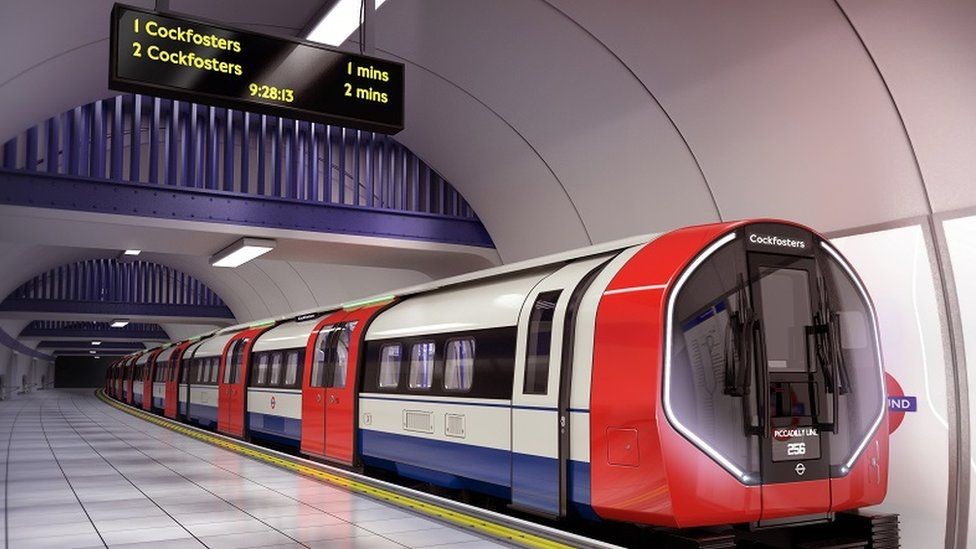
Piccadilly Line Upgrade
Designing critical infrastructure upgrades to enable more reliable, more frequent and faster journeys for Londoners.
- Service 1
Transport for London
- Service 1
- Detailed design
- Buildability and construction advice
- Service 1
2023
Key benefits
- We delivered early and for less money, enabling us to carry out more work:
- We identified and delivered cost savings of over 25% against the original price.
- We shaved 82 days off the programme, representing a time saving of more than 15%.
- These efficiencies meant our customer was able to give us significant additional scope; a real value add.
- We achieved these savings by implementing Production Thinking principles and a smart workflow system to streamline the programme, improve reliability and enhance productivity.
- We dramatically improved safety standards with our proposed designs, with more than 90% of the new signals designed to be maintainable at ground level.
- We created a dynamic design which can be updated in response to learnings generated through the ongoing installation.
Challenge
The Piccadilly line is the second longest line on the London Underground (after the Central line), stretching from Heathrow in the South, through to Barons Court in central London, and then out to Cockfosters in the North. With its new fleet of rolling stock set to enter into passenger service in 2025, our customer came to us with a complex problem: they needed to upgrade their existing signalling system so that it would be compatible with the new 24TS trains, while also continuing to support the existing fleet in the meantime.
Solution
Surveys
We were commissioned to design critical upgrades to the civils infrastructure supporting approximately 200 existing signals, working closely with London Underground. This was a technically challenging project: firstly, we needed to carry out numerous intrusive surveys to ensure that the installation of concrete foundations to support the new signal posts avoided impacting existing Underground assets and disturbing ground conditions. These surveys included ground condition, soil contamination, structural integrity, buried services (utilities), and line level and track clearance assessments. Given the historic nature of the Piccadilly line, there was an additional layer of complexity; there was a high volume of existing assets (particularly utilities) and not all of them were documented, so we had to be extremely cautious in our approach to onsite surveys. Furthermore, to avoid disruption to passengers, surveys were carried out in windows of around four hours per night.
Secondly, our solution was designed to prioritise safety by ensuring that in the future, the number of intrusive surveys is minimised, and that where they do have to take place, working at height is almost eliminated. Future maintenance teams will have high levels of confidence in the integrity of the designs and will need to carry out fewer onsite surveys. Over 90% of the new signals are designed to be maintainable at ground level and do not require working at height. This reduces the inherent risks associated with the activity, as well as reducing the time spent in a live rail environment.
Value engineering
Value engineering played an important role in this project. We applied the principles of Production Thinking to proactively identify opportunities to increase productivity and reliability, embed innovation and remove inefficiencies. This approach meant we were able to streamline our programme, saving time and money during both the design and construction phases. To deliver these benefits, our in-house design team implemented Jira, a smart workflow management tool used for managing and tracking tasks within a project. We used Jira to understand and optimise interdependencies between tasks, to avoid duplications and rework, to facilitate collaboration at each stage of the design and to create a library of on-the-shelf designs.
Working in this way culminated in a catalogue of standardised designs which can be used across the LU network moving forward. These designs have been shared with TfL for use by the installer of the new infrastructure. There were further efficiencies, too: delivering each work package ahead of schedule meant that we were able to take on additional work, maximising the value of our customer’s investment, while allowing us to add significant additional value to the project. The extra work packages were delivered in line with the original programme timeframes and agreed cost.
Furthermore, our lean and efficient designs reduced carbon emissions in the delivery phase as they required less concrete to be used in the upgrades to the civils infrastructure. Using Jira helped to build trust with our customer, who had full access to the system and an auditable record of our ways of working.
Next steps - We are drawing on our extensive experience of delivering complex projects to provide technical assurance services (buildability and construction advice) during the delivery phase of the project, collaborating with Transport for London and its construction partner to ensure the effective delivery of the signalling upgrades.
Contact and social
Aviation and integrated transport
